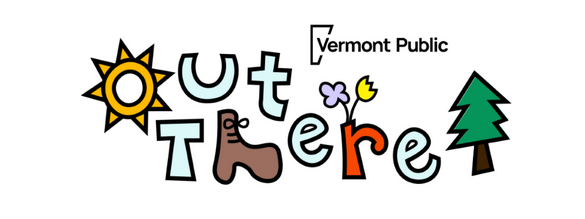This is the web version of our email newsletter, Out There! Sign up to get our monthly dose of all things environment — from creatures you might encounter on your next stroll, to a critical look at the state's energy transition, plus ways to take part in community science and a roundup of local outdoor events.
🌕🌑🌕 It’s Thursday, March 13. Here’s what’s on deck:
- Potential changes to hunting
- Vermont emissions are too high
- A lunar eclipse!
But first,
Keeping animals safe from bird flu

There’s no evidence that bird flu can readily spread between people. But the virus has been devastating for certain wildlife, killing hordes of elephant seals, sea lions, dolphins, and causing mass die-offs of wild birds. Among birds like chickens and turkeys, the virus is particularly lethal – causing nearly 100% mortality.
This year, as the virus continues to run rampant among wild birds and has reached dairy cows throughout the country, Vermont farmers and the state are taking new precautions to try to keep animals and people safe:
🐔 Changes on poultry farms: Some poultry farmers have sold off their egg-laying flocks. Others are choosing to butcher birds on their farm, instead of processing the animals elsewhere. And many are tightening up biosecurity measures, like adding boot washes, and asking people who have backyard birds not to visit.
🥛 Testing milk supply: Scientists think cows pick up the virus from infected milk. So earlier this year, Vermont started testing milk from every Grade A dairy farm in the state that’s sent for pasteurization. (That doesn’t apply to raw milk dairies that only produce cheese.) The state also tests every lactating cow that enters Vermont within a week of arrival, as required by a federal order. Most cows who get sick from bird flu recover, and some have minor to no symptoms.
😷 Testing flu patients: There have been 70 confirmed human cases of bird flu in the U.S. since last year, and none along the East coast. The vast majority of people got infected after working at dairy or poultry farms. To monitor for bird flu in Vermont, the state health department is currently testing viral samples from every hospitalized flu patient.
🙋 What you can do: Public health officials say the risk to the general population is low. But they advise to avoid touching sick or dead birds. If you have a backyard flock, keep your animals away from wild birds as much as possible, wash your hands before and after feeding your birds, and consider wearing a separate set of clothes and shoes. And don’t feed your cat raw pet food or raw milk — several cats have died in the U.S. because of this.
In other news
🦌♀️ Big changes proposed to deer hunting: A state board wants to allow hunters to shoot female deer in November for the first time since the 1980s as a way to control deer populations. Right now, hunters using a rifle or shotgun are only allowed to kill bucks. They’re also calling to expand archery season and to allow hunters to take a second buck. The public comment period is open through late May and public meetings will take place next week.
😞 Bad news for emission targets: Vermont is unlikely to meet legally-mandated requirements for emission reductions in 2025, based on an analysis of gasoline and heating fuel sales data in 2023 and 2024. The Conservation Law Foundation has already sued the state for its alleged failure to reduce emissions in line with the Paris Agreement (a 26% reduction below 2005 levels).
🦆 Vermont has the most birders per capita in the U.S.: That’s according to the director of Birds of Vermont Museum when looking at data from eBird, a popular birding app. The Huntington museum recently invited people to participate in a community science project called the Great Backyard Bird Count, and hosts monthly bird walks open to the public.
In your backyard (re-run)

Get out there

🌠 Set your alarm for 2:26 a.m. when you go to sleep tonight: In the early hours of Friday morning a total lunar eclipse will be visible for just over an hour, until 3:31 a.m when the moon passes into Earth’s shadow. During the eclipse, Earth will perfectly line up between the sun and the moon, blocking most sunlight from reaching the moon’s surface. But long red wavelengths of light can still travel through our planet’s atmosphere, so the moon will appear a coppery color. The forecast calls for partly cloudy skies.
Credits: This week’s edition was put together by Lexi Krupp with lots of help from the Vermont Public team, including graphics by Laura Nakasaka and digital support from Sophie Stephens. Editing by April McCullum.





